Appointment of the New Japanese Ambassador to Belgium (No. 60)
The previous day the announcement of my successor as the new Japanese Ambassador to Belgium was made. This person is Masafumi Ishii, who until recently was the Director-General for Legal Affairs of the Ministry of Foreign Affairs in Japan. Mr Ishii will take up office in practice around the middle of September. He is seven years my junior at the Ministry of Foreign Affairs, and one of the younger Japanese ambassadors to take up office in Belgium. As he has come on a business trip to Belgium to discuss matters of security with NATO, I think he feels reassured by the fact that he already has got acquainted with some people. Where he differs slightly from the previous ambassadors, is in the fact that he has no prior experience as a chief of diplomatic missions abroad. Belgium will be his first post as an ambassador (In my case, I had served as the Consul General in Chicago, as well as the Ambassador to Vietnam). Furthermore, he was trained in English, so he might not be that good at French. The three previous ambassadors, including me, all enjoyed playing golf; it seems Mr Ishii does not share the same hobby. I hope he will grow very fond of Belgium, including the winter weather and the traffic situation in the centre of Brussels.
<Minister d’Anethan Resting in Zoushigaya Cemetery Park and His Descendants>
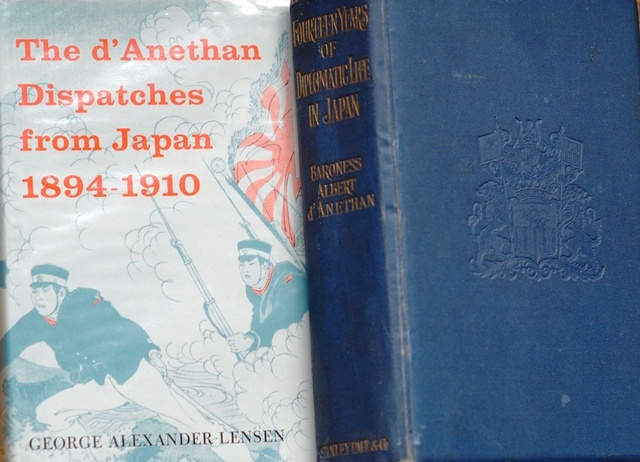 In Chat of the Ambassador 29 and 31, so far I already introduced the Belgian diplomat who during the Meiji-period for seventeen long years worked as Belgian minister (chief of mission) to Japan and who was buried in Zoushigaya Cemetery Park in Tokyo after he succumbed to his illness during his appointment in office. Ever since my appointment in Belgium, I wanted to meet with a descendent of him, and the previous week this wish was fulfilled. This person is 59-year old Baron Henri d’Anethan of the d’Anethan lineage. Minister Albert d’Anethan, who served in Japan more than a hundred years back, in fact had no children. His wife, who was British (and a famous writer), returned to the United Kingdom after the minister’s death and for this reason family ties and relations became severed. Baron Henri d’Anethan, whom I met, is the fifth descendant of former Prime Minister Jules-Joseph d’Anethan (1803–1888), elder brother of minister Albert d’Anethan’s father.yomoyama_060_danethan2 In Chat of the Ambassador 29 and 31, so far I already introduced the Belgian diplomat who during the Meiji-period for seventeen long years worked as Belgian minister (chief of mission) to Japan and who was buried in Zoushigaya Cemetery Park in Tokyo after he succumbed to his illness during his appointment in office. Ever since my appointment in Belgium, I wanted to meet with a descendent of him, and the previous week this wish was fulfilled. This person is 59-year old Baron Henri d’Anethan of the d’Anethan lineage. Minister Albert d’Anethan, who served in Japan more than a hundred years back, in fact had no children. His wife, who was British (and a famous writer), returned to the United Kingdom after the minister’s death and for this reason family ties and relations became severed. Baron Henri d’Anethan, whom I met, is the fifth descendant of former Prime Minister Jules-Joseph d’Anethan (1803–1888), elder brother of minister Albert d’Anethan’s father.yomoyama_060_danethan2  His family produced diplomats through the generations, and Baron Henri’s father Jean d’Anethan also was Ambassador to Ethiopia and permanent representative of NATO, but came to pass last year. Upon my meeting with Duke Henri d’Anethan, he brought two books with him: one heavy book (470 pages), written and left behind by Albert d’Anethan’s wife, called ‘Fourteen Years of Diplomatic Life in Japan’, as well as a chronological record titled ‘The d’Anethan Dispatches from Japan 1894–1910’ (Sophia University: 1967, 270 pages). I am currently ploughing through these borrowed books, and being a diplomat as well, I was surprised by the sincere personality and deep insight, as well as the fiery dynamism of this minister Albert d’Anethan. I am truly thankful to Belgium to have sent such an excellent diplomat in Japan for seventeen years. His family produced diplomats through the generations, and Baron Henri’s father Jean d’Anethan also was Ambassador to Ethiopia and permanent representative of NATO, but came to pass last year. Upon my meeting with Duke Henri d’Anethan, he brought two books with him: one heavy book (470 pages), written and left behind by Albert d’Anethan’s wife, called ‘Fourteen Years of Diplomatic Life in Japan’, as well as a chronological record titled ‘The d’Anethan Dispatches from Japan 1894–1910’ (Sophia University: 1967, 270 pages). I am currently ploughing through these borrowed books, and being a diplomat as well, I was surprised by the sincere personality and deep insight, as well as the fiery dynamism of this minister Albert d’Anethan. I am truly thankful to Belgium to have sent such an excellent diplomat in Japan for seventeen years.
<Antwerp and Bruges>
 Before I leave Belgium I would like to go and see some places again one more time. My service in Belgium has been short of two years, but in that time I got to visit many cities, places of scenic beauty and historic interest, be it in private or on official duty, all of which left me with a great impression. Therefore it will be a difficult task to pick a ‘place to have a last look’. However, right before I leave, I will still have many opportunities to visit places of interest in Brussels. So as the places I will go for one last visit outside of Brussels, I have decided on Antwerp and Bruges. Antwerp is located about fifty kilometres to the north of Brussels, and takes just about one hour by car to get there. For that reason I have come to like visiting every month or so. The Notre-Dame Cathedral in the old city centre is truly a beautiful sight from the outside. When going inside, you can enjoy plentiful famous paintings not unlike a top-notch museum. Before I leave Belgium I would like to go and see some places again one more time. My service in Belgium has been short of two years, but in that time I got to visit many cities, places of scenic beauty and historic interest, be it in private or on official duty, all of which left me with a great impression. Therefore it will be a difficult task to pick a ‘place to have a last look’. However, right before I leave, I will still have many opportunities to visit places of interest in Brussels. So as the places I will go for one last visit outside of Brussels, I have decided on Antwerp and Bruges. Antwerp is located about fifty kilometres to the north of Brussels, and takes just about one hour by car to get there. For that reason I have come to like visiting every month or so. The Notre-Dame Cathedral in the old city centre is truly a beautiful sight from the outside. When going inside, you can enjoy plentiful famous paintings not unlike a top-notch museum.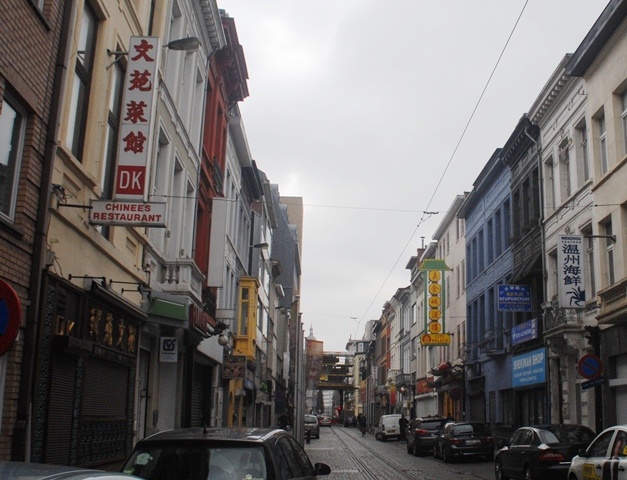 On the other hand, stepping just outside the city centre, you have the large port of Antwerp, where the contrast of the spreading of the bases of world-leading petro-chemical terminals is fascinating as well. During lunch time I enjoyed Chinese food in Chinatown and afterwards I always hopped in a nearby massage parlour, where I would receive an exquisite foot massage by a Tibetan person. There are many Jewish people living in Antwerp, many of whom fled the Nazis at the beginning of the Second World War and boarded the Red Star Line, which departed for America from the pier in Antwerp every day—a story which is also famous. Nowadays, Antwerp transformed into becoming the ‘Diamond City’ and contributed to Belgium’s economy, thanks to these people. History is a strange and ironical thing, isn’t it. On the other hand, stepping just outside the city centre, you have the large port of Antwerp, where the contrast of the spreading of the bases of world-leading petro-chemical terminals is fascinating as well. During lunch time I enjoyed Chinese food in Chinatown and afterwards I always hopped in a nearby massage parlour, where I would receive an exquisite foot massage by a Tibetan person. There are many Jewish people living in Antwerp, many of whom fled the Nazis at the beginning of the Second World War and boarded the Red Star Line, which departed for America from the pier in Antwerp every day—a story which is also famous. Nowadays, Antwerp transformed into becoming the ‘Diamond City’ and contributed to Belgium’s economy, thanks to these people. History is a strange and ironical thing, isn’t it.
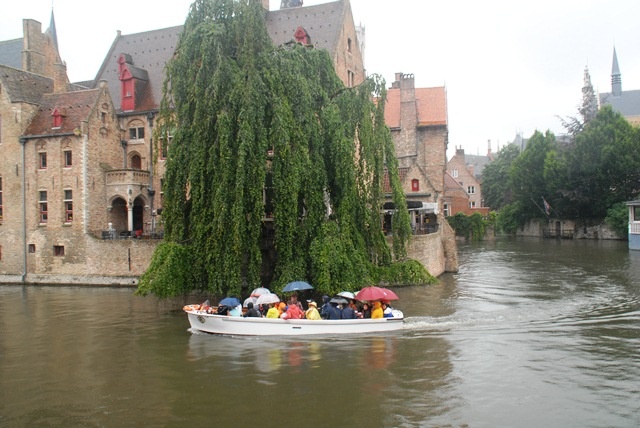 I believe Bruges needs no explanation again—it is sometimes called the ‘Venice in the North’ and is a prominent tourist location in Europe. Every time friends from Japan come to visit, they are delighted to have been shown around in Bruges. If we were blessed by the weather, taking a boat ride around the channels was the best. I believe Bruges needs no explanation again—it is sometimes called the ‘Venice in the North’ and is a prominent tourist location in Europe. Every time friends from Japan come to visit, they are delighted to have been shown around in Bruges. If we were blessed by the weather, taking a boat ride around the channels was the best. 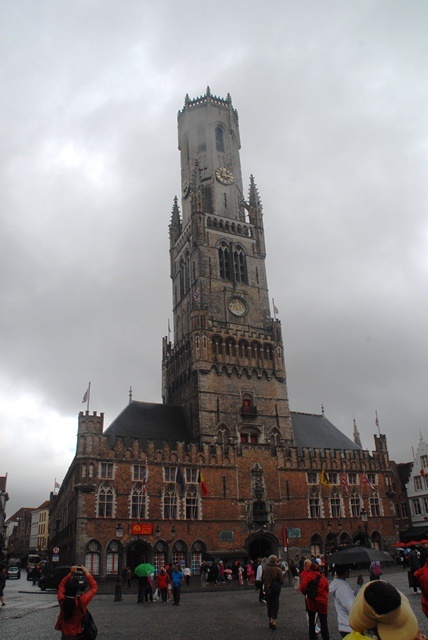 Many old buildings are preserved in the city centre, when you stand still for a while in the vicinity of the main square and city hall it feels as if you are drawn back to the Middle-Ages.Outside of the city you also have the UNESCO World Heritage appointed beguinage, where you can be immersed even deeper in history. On the other hand, in recent years, Bruges has been praised as a culinary city, and has two outstanding three-Michelin-star restaurants in the Michelin guidebook. There are only three restaurants in the whole of Belgium with three Michelin stars. The capital, Brussels, has four restaurants with only two Michelin stars—as such you can understand Bruges’ gourmet denotation. It is only natural that Bruges with its “great sightseeing and fine cuisine” has become a city to my liking. Many old buildings are preserved in the city centre, when you stand still for a while in the vicinity of the main square and city hall it feels as if you are drawn back to the Middle-Ages.Outside of the city you also have the UNESCO World Heritage appointed beguinage, where you can be immersed even deeper in history. On the other hand, in recent years, Bruges has been praised as a culinary city, and has two outstanding three-Michelin-star restaurants in the Michelin guidebook. There are only three restaurants in the whole of Belgium with three Michelin stars. The capital, Brussels, has four restaurants with only two Michelin stars—as such you can understand Bruges’ gourmet denotation. It is only natural that Bruges with its “great sightseeing and fine cuisine” has become a city to my liking.
<Almanacs of Belgian Nobility>
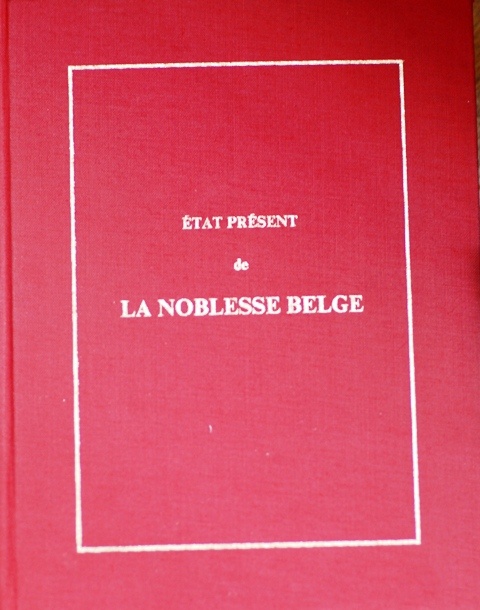 I have already mentioned the existence of the nobility system in Belgium in these Chat of the Ambassador series. Recently a Belgian friend, who is from a family of nobility, showed me several almanacs of nobility, and I was surprised by the details of the content. The most authoritative list seems to be the over ten-tomes long ‘État présent de la noblesse belge’, which was for the first time compiled in 1960 and later went through several revisions. The research into each noble family line goes back to several hundreds of years and writes in full detail about the marital relations and their decorations of past generations that have long come to pass. Compared to that, the 500-page sized ‘Carnet mondain’ almanac only has a record of the existing nobility families. Besides their addresses and telephone numbers, their e-mail addresses and mobile phone numbers are also listed, which makes it really useful to keep in contact with one another, I think. Another one is the ‘High Life de Belgique’, a small but heavy edition of a thousand pages. The people herein listed are not only nobility, but also the rich and prominent are listed, amounting to a total number into more than ten-thousands—clearly a concise list that allows one to conveniently keep in contact with one another. For me as a foreigner these almanacs were not necessary on a daily basis, but they proved to be indispensable whenever I had to look up a person for diplomatic business reasons. I have already mentioned the existence of the nobility system in Belgium in these Chat of the Ambassador series. Recently a Belgian friend, who is from a family of nobility, showed me several almanacs of nobility, and I was surprised by the details of the content. The most authoritative list seems to be the over ten-tomes long ‘État présent de la noblesse belge’, which was for the first time compiled in 1960 and later went through several revisions. The research into each noble family line goes back to several hundreds of years and writes in full detail about the marital relations and their decorations of past generations that have long come to pass. Compared to that, the 500-page sized ‘Carnet mondain’ almanac only has a record of the existing nobility families. Besides their addresses and telephone numbers, their e-mail addresses and mobile phone numbers are also listed, which makes it really useful to keep in contact with one another, I think. Another one is the ‘High Life de Belgique’, a small but heavy edition of a thousand pages. The people herein listed are not only nobility, but also the rich and prominent are listed, amounting to a total number into more than ten-thousands—clearly a concise list that allows one to conveniently keep in contact with one another. For me as a foreigner these almanacs were not necessary on a daily basis, but they proved to be indispensable whenever I had to look up a person for diplomatic business reasons.
By the way, the previous day I was drawn to and had the chance to have a look at a list of people who were newly given a noble title (so called new nobility or peer of recent creation) by Albert II, who reigned as king between 1993 and 2013. Though many of whom were high-ranked government officials, businessmen or scholars, there are other interesting cases. Given the title of viscount was in 2003, to astronaut Frank De Winne. The title of baron was given to former cyclist Eddy Merckx in 1997 and to track-and-field athlete Gaston Roelants in 2002. The latter was a gold medallist of 3000 m steeples in the Tokyo Olympic Games. Furthermore, the following, who are probably familiar to us Japanese, have also received the same title. In 1998: baritone singer Joseph Van Dam; in 2004: comedy actress Annie Cordy. Also: popular singer Salvatore Adamo, who was given a knighthood. This system of new nobility is similar to the Japanese system of decorations and medals of merit.
<Flemish Tapestry Found in Florence>
The previous month, taking advantage of the summer break, I went to visit Florence in central Italy, where I enjoyed a four-night and three-day sojourn. Florence was ranked third in the recently published ‘The Most Popular Touristic City of the World’ published by a large American travel magazine company (by the way, Kyoto ranked number one)—the place to be to marvel at the Italian Renaissance art of Buonarroti Michelangelo and Sandro Botticelli amongst others. There are almost ten places in the vicinity listed in the Michelin travel guide with a three-star rating under ‘must-look touristic spots’. If you would think to leisurely visit them all, you would have to stay for nearly a week. In my hurried schedule by chance I visited the Museum of Mediaeval Residence, located in a totally inconspicuous location in the centre of the city—a beautiful discovery! The patinated four-storey stone building, which was built around the 16th century by a wealthy local textile merchant, calls to mind the look of that time and brings history to life. The second floor of the building serve as living quarters. On one of the walls near the ceiling of the top storey hangs a four-piece horizontal tapestry and had quite a mediaeval-looking feel to it (or was it early modern). They were all tapestries woven in the Flanders region in Belgium. It is a well-known fact that the Flemish weaving industry of that time was widely beloved amongst the noble and wealthy in many places in Europe, but this time I felt I unexpectedly confirmed this fact in Florence. The weaving industry in Belgium evolved rapidly from the 14th century onwards and reached its heyday in the 16th century, but fell in a steady decline thereafter and currently only a few continue operating in small amount. The trip to Florence for me was one of where I could sense the rise and fall of history.
|